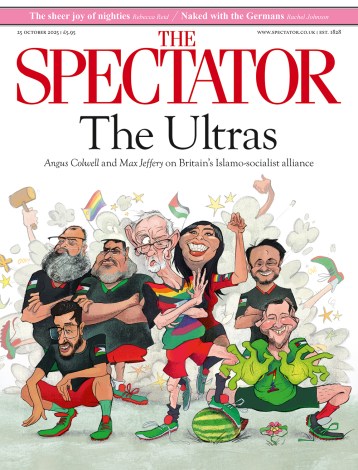In 1892 Frank Hall, who was building a road for the Imperial British East Africa Company, decided to punish some local Masai for obstructing his work. He raided their village with a force of 150 men armed with rifles and a machine-gun, destroyed their huts, took their cattle, but felt dissatisfied at only killing five of them. ‘It is almost impossible to get at them to exterminate the lot,’ he wrote apologetically to his father, ‘though they get some pretty hot lessons occasionally for they are always shot like dogs when seen.’ A couple of years later, he improved his score by slaughtering almost 100 from a community that failed to provide the food he wanted.
Out of such violence was born the colony of Kenya. In 1895 the British government took over the assets of Hall’s company, a great swathe of territory acquired from the Kikuyu, after it proved unable to finance a railway from Mombasa to Lake Victoria — Nairobi was chosen as its inland depot. Charles Eliot, an early governor, decreed that no one with capital of less than £300 should be allowed to buy land, thus ensuring that Kenya would have some of the most expensive real estate in the empire, owned by some of its most aristocratic colonists. Drought, locusts and an unpredictable commodities market drove many to the wall, but nothing shook the self-assurance of the survivors. ‘It is hard to credit what a good opinion we had of ourselves in those days’, wrote Elspeth Huxley. ‘There was the empire, and there were we at the heart and centre of the world.’
The goal of C. S. Nicholls’ history is ‘to evaluate [the whites’] real contribution to the development of Kenya’. Having grown up there in the 1950s, and with a fine biography of Elspeth Huxley to her credit, she is well-qualified for the task. In meticulous detail she records the building of schools, the foundation of hospitals, and the development of transportation. Indeed so concerned is she to give credit that her history frequently reads like a parish magazine, filled with obscure names celebrated for small achievements — the surveyor Frederick Jackson, for example, ‘left behind at Kibwezi suffering from inflamed piles. He was a great loss’; and District Officer Botry Pigott whose raft was ‘upended by a hippopotamus. He was eaten by a crocodile’; and the administrator, ‘Sharpie’ Sharpe, who had ‘two lavatories known as Haraka and Baraka after the proverb “Haraka, haraka, haina baraka” (haste has no blessings).’ As much space is given to the behaviour of Captain Dugmore who signed his letters ‘The Bloody Old Shit’, soaked his pyjamas in paraffin to rid them of fleas and shot dead his replacement as commander of Fort Elvira, as to the rather more significant 1934 Land Commission which entrenched the colour bar throughout the colony.
Rather unexpectedly this approach proves to be both charming and extremely effective in conveying the narrow horizons and parochial concerns of the colonists. Unfortunately it also lacks perspective, and largely ignores the impact of the whites’ incursion upon the existing inhabitants. Since the author consulted Colonel Richard Meinertzhagen’s diary, she might usefully have quoted his account of an interview with Charles Eliot as early as 1902 in which the governor revealed that his intention was
This weakness becomes crippling in the book’s treatment of the Mau Mau emergency. Not only does Nicholls fail to explain the cause of the uprising — Kikuyu resentment at the loss of their land — her account of the conflict is sadly wanting. Between 1952 and 1960, the Mau Mau killed more than 2,000 Africans, but just 32 white settlers. In return the British hanged 1,048 Kikuyu, killed approximately 20,000 and detained 150,000. Two recent histories describe the procedures employed as those of a police state and compare the torture of detainees in camps such as Hola to the French campaign of terror in Algeria. To sum this up, as Nicholls does, in a comfortable euphemism, ‘The system unhappily led to abuses’, represents a sorry lapse of humanity.to confine the natives to reserves and use them as cheap labour on farms. I suggested that the country belonged to Africans, that their interests must prevail over the interests of strangers. [Eliot] would not have it; he kept on using the word ‘paramount’ with reference to the claims of Europeans. I said that some day the Africans would be educated and armed; that would lead to a clash.
Its anachronistic air and detailed information should endear Red Strangers to old Kenya hands. But for a wider readership its chief value lies in the way it reflects colonial attitudes, and thereby explains why the colony’s end in 1963, barely 70 years after its foundation, came as such a shock to its white tribe.





Comments